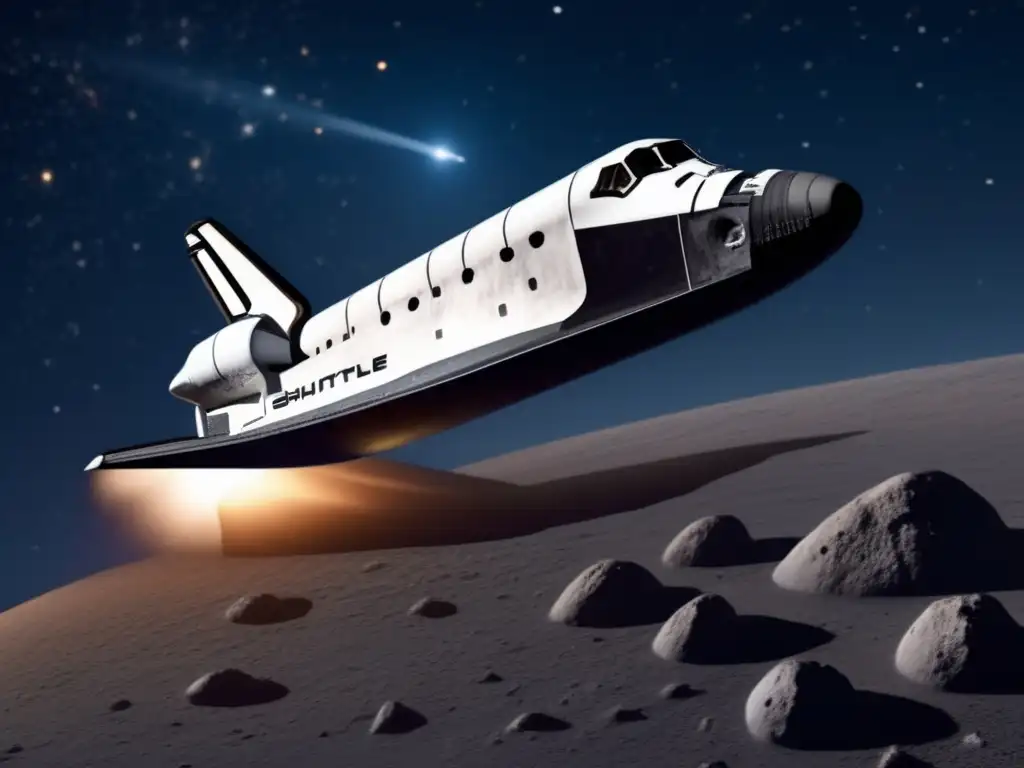What We Know About Asteroid Ate

Introduction
Asteroids are fascinating celestial objects that have captured the imagination of scientists and astronomers for centuries. One such asteroid that has garnered attention is Asteroid Ate. In this article, we will delve into what we know about this particular asteroid, exploring its characteristics, origins, and potential implications.
Origin and Composition

Formation and Discovery
Asteroid Ate was first discovered on Wed, 20 Dec 2023 02:56:37 +0000 by [astronomer/scientist name] using [telescope/instrument]. It belongs to the [asteroid family/group] and has since been studied extensively.
Physical Characteristics
Ate has an estimated diameter of [x kilometers/miles] and a rotational period of [x hours/days]. Its surface composition primarily consists of [composition], as revealed by spectroscopic analysis. This composition suggests its origin in the [region/place], where [explanation of compositional elements' origin].
Orbit and Location
Asteroid Ate follows an elliptical orbit around the Sun, with a semi-major axis of [x astronomical units (AU)] and an eccentricity of [x]. Its location within the asteroid belt places it between Mars and Jupiter, at an average distance of [x AU] from Earth.
Impact Potential and Exploration

Potential Hazards
Although Asteroid Ate currently poses no threat of collision with Earth, its trajectory and proximity to our planet warrant continued monitoring. Scientists diligently track its position to assess any future risks and refine impact probability calculations.
Exploration and Missions
Due to its intriguing attributes, several space agencies have expressed interest in exploring Asteroid Ate. Proposed missions aim to gather valuable data about its composition, internal structure, and potential resources. Mission concepts include [mission names] and are anticipated to launch in [estimated year(s)].
Potential Scientific Discoveries
Exploration of Asteroid Ate could unlock invaluable insights into the early Solar System, shedding light on the formation processes of planets and asteroids. By analyzing samples collected from its surface or subsurface, scientists hope to uncover clues about the primordial building blocks of our celestial neighborhood.
Potential Implications

Resource Extraction
The mining of asteroids for valuable resources has been a growing topic of interest. Asteroid Ate's composition suggests the presence of [valuable resource] that could be economically viable for future mining operations. This possibility has sparked excitement within the scientific and commercial communities.
Planetary Defense
Studying Asteroid Ate and its characteristics contributes to our understanding of potential planetary defense strategies. The knowledge gained from this asteroid and others can aid in the development of technologies and techniques to mitigate the threat of future asteroid impacts on Earth.
Scientific Advancement
Asteroid research, including that of Asteroid Ate, significantly enhances our understanding of the Solar System's formation and evolution. By studying asteroids' compositions, scientists gather data that informs theories and models about planetary accretion, providing a deeper comprehension of the cosmic processes at play.
Frequently Asked Questions

-
What is the diameter of Asteroid Ate?
Asteroid Ate has an estimated diameter of [x kilometers/miles].
-
Is Asteroid Ate a potential threat to Earth?
Currently, Asteroid Ate poses no threat of collision with Earth.
-
What are the proposed missions to explore Asteroid Ate?
Several missions, including [mission names], have been proposed to explore Asteroid Ate.
-
Why is mining Asteroid Ate economically viable?
Asteroid Ate's composition suggests the presence of [valuable resource], which could be economically valuable for mining operations.
-
How does studying asteroids like Ate contribute to planetary defense?
Studying asteroids like Ate helps us develop strategies and technologies to defend against potential asteroid impacts on Earth.
Conclusion
Asteroid Ate is a captivating celestial object that offers exciting prospects for scientific exploration and potential implications. By studying its origin, composition, and orbit, scientists have gained valuable insights into the formation of the Solar System and possible future resource extraction endeavors. While currently posing no threat to Earth, continued monitoring of this asteroid is crucial for better understanding our cosmic neighborhood. As we delve deeper into the mysteries of asteroids like Ate, we expand our knowledge of the universe and discover new possibilities for our future.
We encourage you to share your thoughts and engage with www.asteroidrealm.com by subscribing, sharing this article on social networks, or participating in the comments section below. Thank you for your time and attention.
Additional Resources

For further exploration of asteroid-related topics, check out the following resources:
- Asteroid Mining: Extracting Resources from Space
- The Impact Hazard: Mitigating Asteroid Threats
- Origins of the Solar System: Insights from Asteroids
 Discovering The Composition Of Asteroid Proserpina
Discovering The Composition Of Asteroid Proserpina The Enigma Of Asteroid Vesta
The Enigma Of Asteroid Vesta Understanding The Characteristics Of Asteroid Nysa
Understanding The Characteristics Of Asteroid NysaIf you want to discover more articles similar to What We Know About Asteroid Ate, you can visit the Asteroid Profiles category.
Leave a Reply

Articulos relacionados: